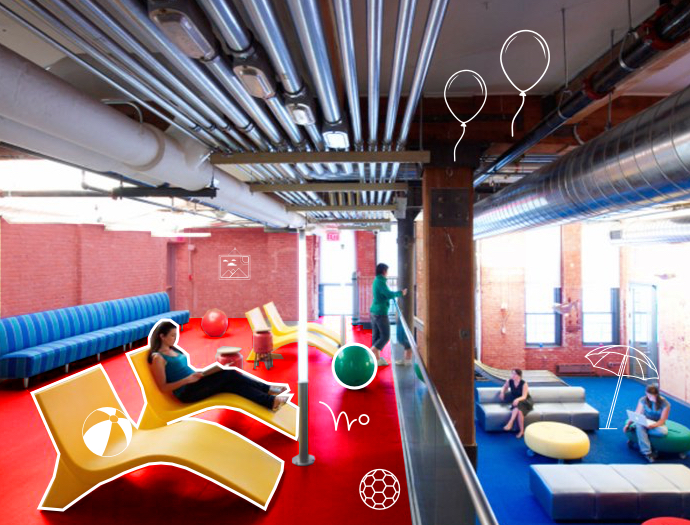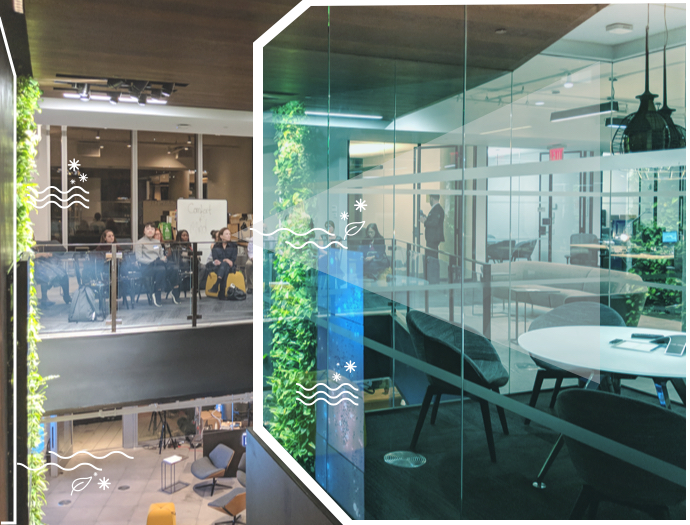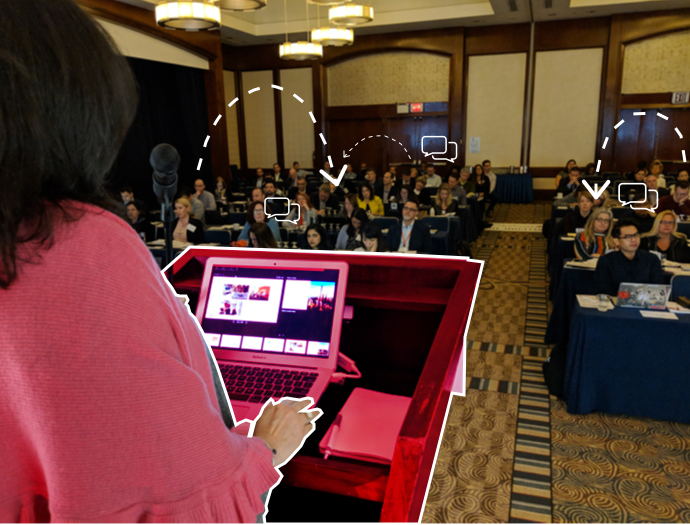PLASTARC recaps their panel discussion from Future Offices which attracted executives from top Fortune 500 companies, key figures in workplace strategy, and more.

Future Offices 2018 began with a series of workshops aimed at helping attendees identify barriers to change within their organization and learn methods for overcoming them. The workshops culminated in a session led by HLW’s Matt Triebner and Michele Neptune that prompted attendees to apply these learnings in a fun simulation. Workshop groups were challenged to implement workplace strategies that would increase employee engagement and uphold brand authenticity, all within a given budget.
In a panel on “Addressing Workplace Needs Through Trends & Tech”, PLASTARC’s Melissa Marsh joined representatives from Accenture, Honeywell, and Cooper Carry. Melissa presented the common principles of attractive workplaces– based on workplaces where people choose, and even pay, to work– and emphasized the need to leverage technology for these efforts. With a surplus of data being collected on occupancy and space utilization, the main need today is to leverage this data to use it effectively.
Among the panelists on stage was one of our own, Melissa Marsh, who co-presented with our long time client, Verizon. The topic of discussion was around real estate as a service and what that means from the perspective of big corporations like Verizon. Melissa started the presentation by outlining a brief history of co-working and how its invention is not particularly new but has existed for decades if you think about school campuses and libraries. What renders the co-working phenomenon new is the intersection between different stakeholders and disciplines such as operations and facilities, HR, IT and other health experts. This fusion of approaches changes how we exchange space and the increasing value we put on the occupant experience.

Lucia Diana at Verizon spoke about what co-working means in the corporate context. In addition to space, co-working is about building a network of people who value collaboration and innovation and as a result, inject this start-up energy back into the ecosystem. Lucia also emphasized the mutual benefits of Verizon co-working that offers its members business supports via Verizon thought leadership on various topics such as 5G, digital media, Internet of things (IoT), AI, AR/VR, blockchain and much more. The big business question that Verizon had at the time was “How can we monetize and make the most use of their assets?” Lucia discussed Verizon’s co-working business objective, which is to increase Verizon’s business and curate a Verizon community through co-working, events and by opening their ‘front porch’ to entrepreneurs. This required a big shift on many fronts, including identifying what Verizon could offer to the innovation community and a shift from space to experience management. Verizon even adopted co-working lessons into its workplace strategy in its Basking Ridge, New Jersey headquarters to implement its own FOS program (flexible office space). All of this was driven by a need for Verizon to refresh and monetize its underutilized assets, enhance its end user experience and add agility to its real estate portfolio.
The jam-packed conference also featured exclusive site tours of some of the most coveted workplaces– Google, Twitter, Boston Consulting Group, Alley, and DELOS. Though each office held its own character and appeal, these offices shared common threads of beauty and functionality, sustainability and wellness, alignment between brand and office space, and a workforce empowered by its management.
While speakers came from a mix of roles, and from a variety of industries, a common message could be found. Many presentations highlighted the importance of creating cohesion between the diverse forces in creating workplace changes, whether they are physical, technological or cultural changes. Many presenters expressed a dire need for greater cohesion between user interface for occupants (such as mobile apps), and the data that facilities is now collecting on a daily, even hourly basis. These industry leaders envision a seamless door-to-door workplace experience for their employees, from parking their cars to booking meeting spaces. Melissa Marsh emphasized the need for strategic management of this data (with occupant permission, of course!) to fully take advantage of the insights occupant data can reveal.
Meanwhile, it seemed that the need for synchronicity not only applies to data and user interface, but also to the people, or stakeholders, in the process of building the workplace. Red Hat’s Regional IT Manager, Mark Grey and Head of Workplace Innovation, Anthony Parzanese, spoke about their experience joining forces from two very different sectors of their organization to transform Red Hat’s long-term real-estate workplace strategy. Twitter’s Global Head of Workplace, Tracy Hawkins described her process along the same lines, explaining that she requires the input of departments like facilities and operations from the start.

When stakeholders come from multiple generations, organizations face an added challenge in integrating space and culture. Pay Wu of TD spoke about the need for big companies to attract and retain the digital talent of the future by offering choices and cultural permissions to work differently. But when workers from a different generation are not used to the autonomous spatial and policy arrangements that younger talent is looking for, it can be hard to make that shift. Getting senior leadership on board from the beginning is crucial to ensuring smooth changes to both space and culture. Representatives from SmithGroupJJR and their clients at Ally and Google, though, also emphasized the importance of engaging with all levels of employees to understand and change culture – while leadership is helpful in shepherding through change, it is crucial to have buy-in and input from as many members of a team as possible.
So what does the future of culture-driven workplace facilities look like? Leaders from NBA, Under Armour, and Twitter agreed that prioritizing comfort and wellness is key. For example, Tracy Hawkins said that her team seeks out homey furniture to warm up work spaces with a more residential feel. Brendan Robinson spoke to Under Armour’s focus on active spaces and occupant wellness helped balance the transition away from assigned desks. By looking to occupant satisfaction and space utilization as measures of success, workplace teams can understand whether they are achieving their spatial and cultural goals and creating a vibrant workplace experience.
All in all, the Future Offices series depicted a creative, innovative vision for tomorrow’s workplaces. A lot of work needs to be done, and many barriers within older, less flexible organizations stand in the way. The key to success is in recognizing the multidisciplinary players, including operations and facilities, employees, IT, and health experts, who can all uniquely contribute to transforming the workplace.




such meetings are very important for development, you can exchange ideas to ask questions of interest